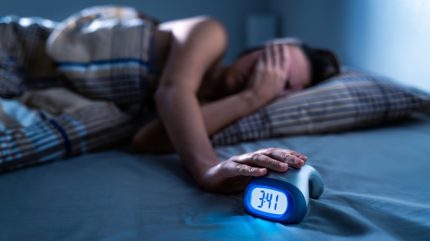
New York-based home sleep diagnostics company Wesper has released findings from a case study on hypoglossal nerve stimulation (HGNS) for obstructive sleep apnoea (OSA) that showed the company’s platform could reduce the treatment titration time by up to 45%.
The Wesper is a remote monitoring system that helps monitor objective treatment responses using neuromodulation treatment. This allows for the HGNS treatment titration time from an average of over 100 days to 55 days, thereby cutting treatment costs and improving treatment adherence.
OSA is a sleep disorder where the walls of the throat relax and narrow during sleep, interrupting normal breathing and leading to interrupted sleep. Common treatments include continuous positive airway pressure (CPAP) and mandibular advancement devices (MAD) – both prevent airway closure.
HGNS treatment has emerged as an alternative to continuous positive airway pressure (CPAP) for treating OSA. As part of the HGNS, mild electrical stimulation is delivered to the hypoglossal nerve, which controls tongue muscles. Post-activation of HGNS, gradual titration is done to the amplitude to achieve the best treatment outcome. This titration process can range from three to six months post-activation.
Wesper’s device provides sleep data to ensure precise analysis, reducing variability in titration. The device also has an AI-powered sleep score mode that can improve treatment consistency and minimise the risk of sub-optimal titration. The device also collects data on various sleep parameters including separating positional, obstructive, and central sleep apnoea along with an analysis of the patient’s leg movements.
The OSA market has experienced volatility in recent months, with market leader Philips issuing several recalls for CPAP machines. The company issued a Class I recall for its DreamStation 2 CPAP machines after reports emerged that the polyester-based polyurethane (PE-PUR) foam used in these devices broke down to release toxic chemicals.
How well do you really know your competitors?
Access the most comprehensive Company Profiles on the market, powered by GlobalData. Save hours of research. Gain competitive edge.

Thank you!
Your download email will arrive shortly
Not ready to buy yet? Download a free sample
We are confident about the unique quality of our Company Profiles. However, we want you to make the most beneficial decision for your business, so we offer a free sample that you can download by submitting the below form
By GlobalDataPhilips’ troubles have made way for other companies in the field to increase their OSA treatment market share. The global annual market for OSA detection and treatment is worth approximately $10bn, as per GlobalData analysis.
Multiple companies are developing novel treatments for OSA. StimAire is developing an injectable stimulator device for treating the illness. The device was designed to modulate peripheral nerves such as the hypoglossal, utilising a tiny, battery-free, injectable receiver/stimulator that is activated by a small wearable.
In January 2023, Vivos Therapeutics received 510(k) clearance from the US Food and Drug Administration for its DNA oral appliance (daytime-night time appliance) for treating mild to moderate OSA. The device acts similar to a MAD by opening the airway by extending the palate and training the tongue to rest in the proper position as well as converting patients to nasal instead of oral breathing.



